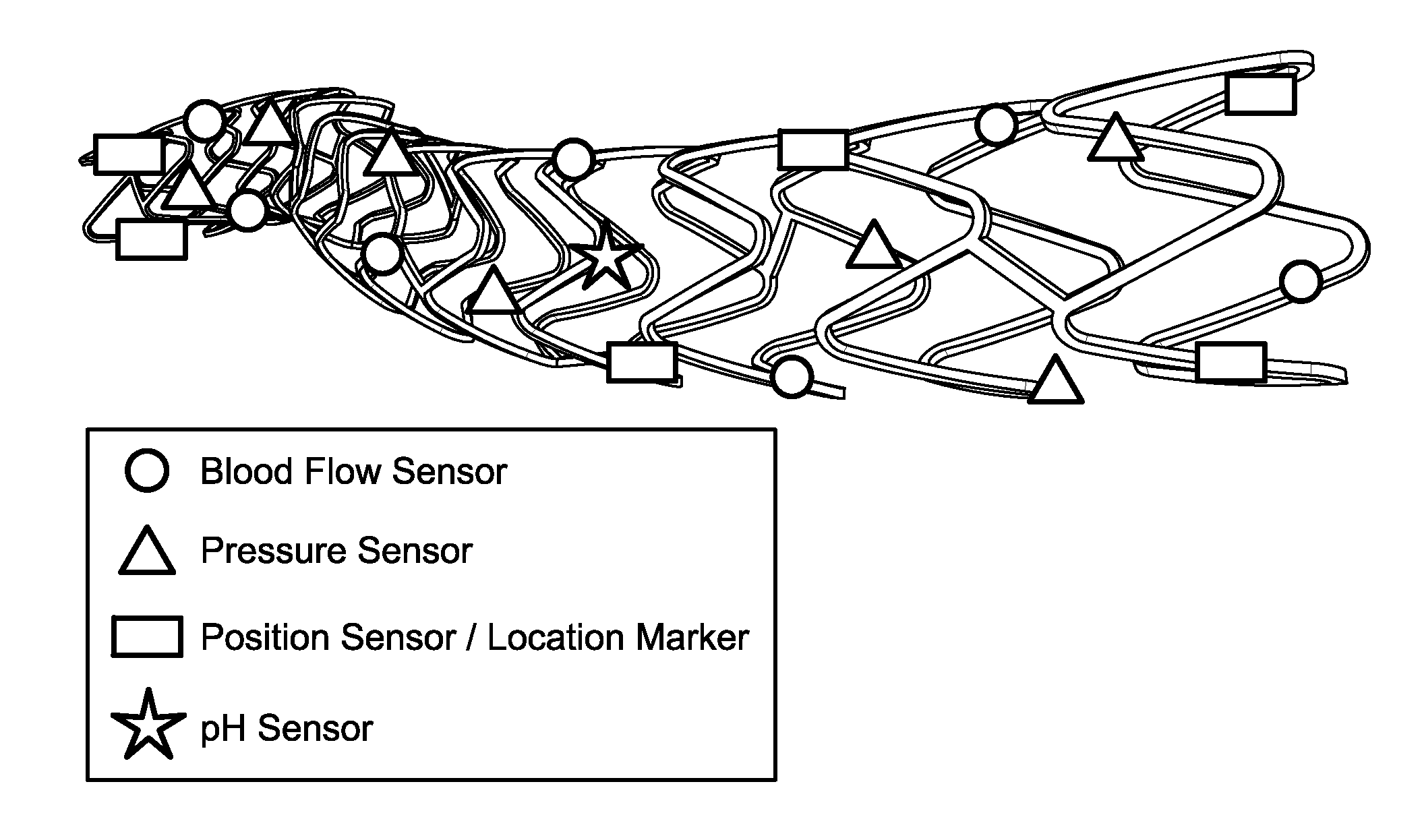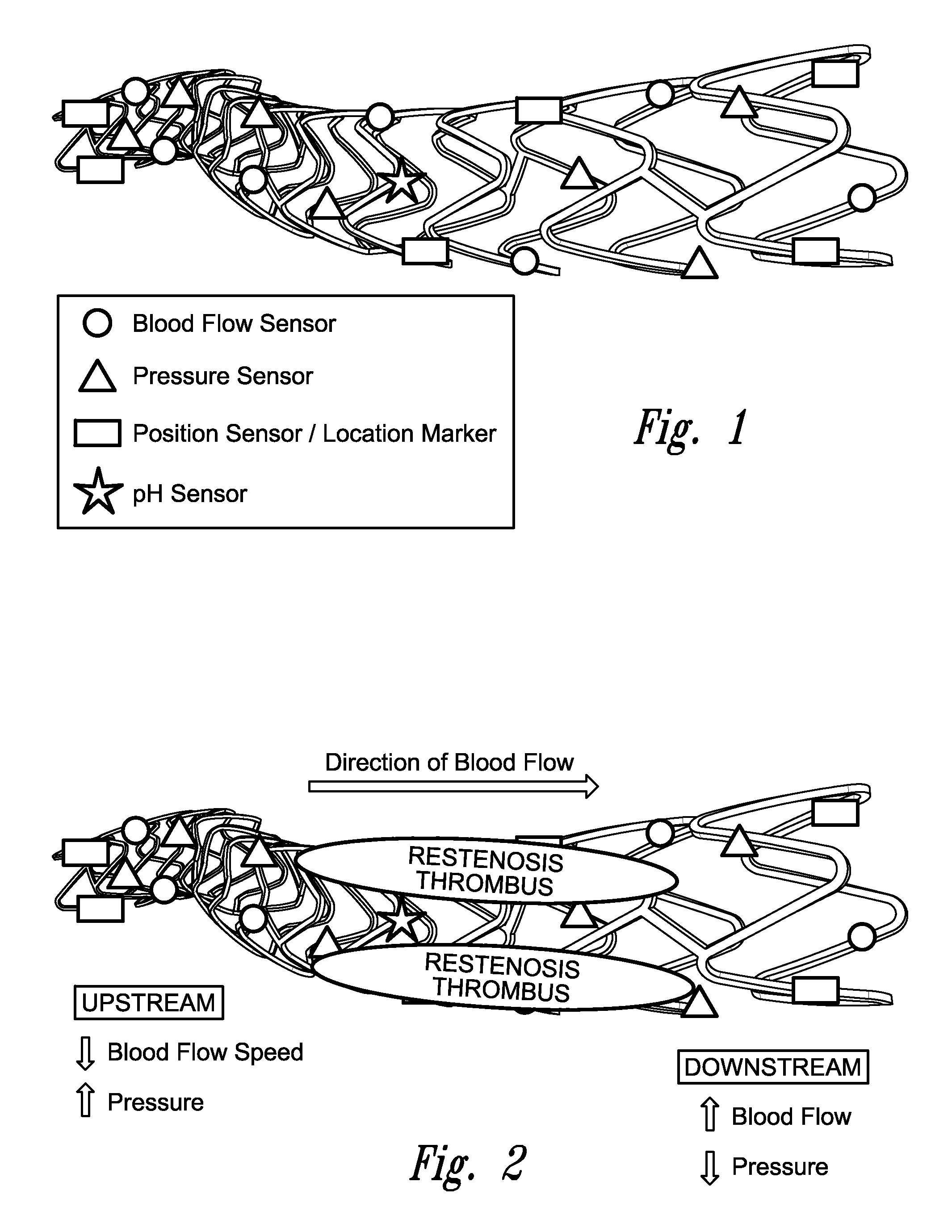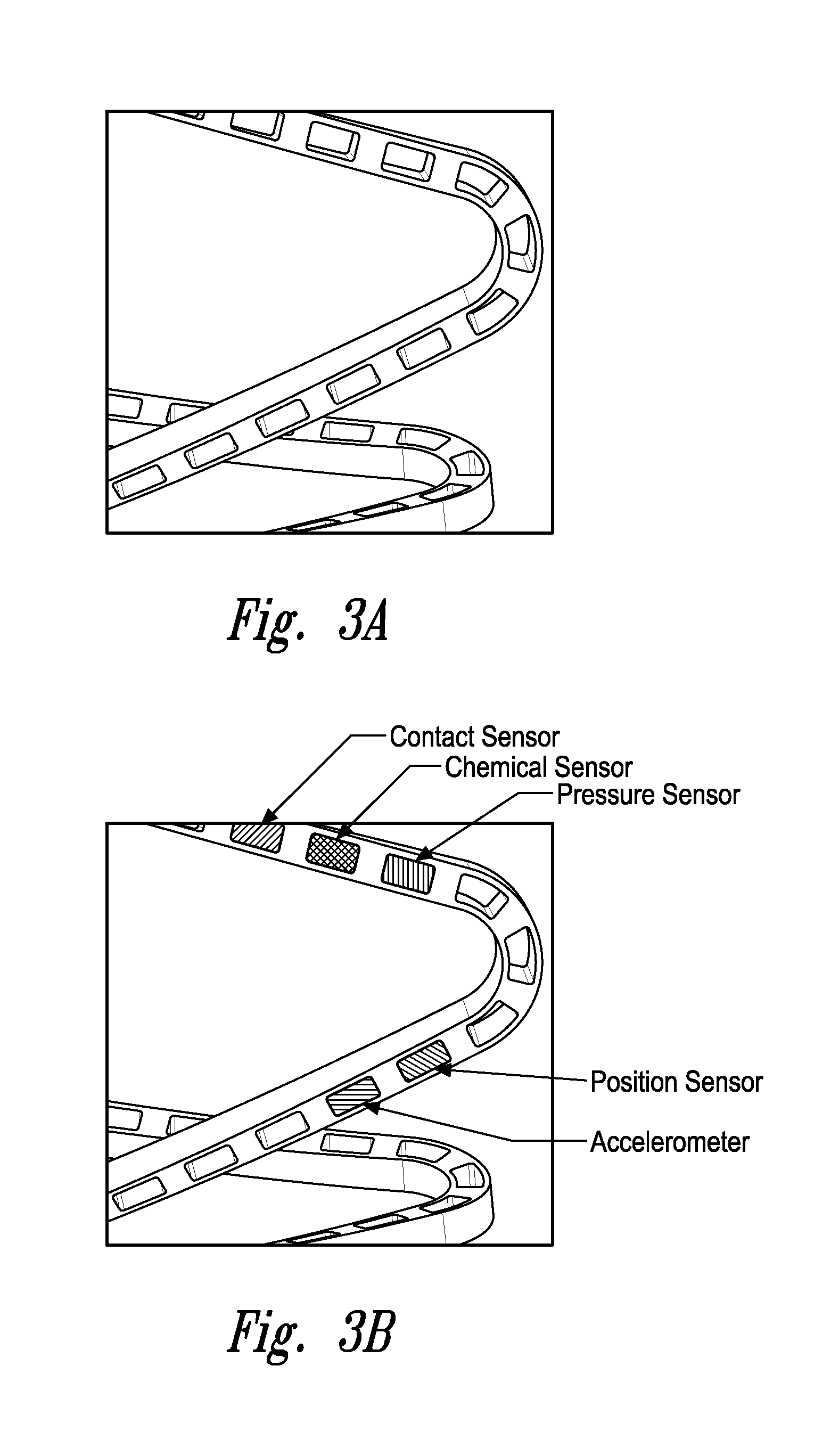Stent monitoring assembly and method of use thereof
a technology of stents and assembly parts, applied in the field of vascular and nonvascular stents, can solve the problems of permanent neurological deficit, pain and shortness, and angina (pain and shortness), and achieve the effects of reducing the risk of strok
- Summary
- Abstract
- Description
- Claims
- Application Information
AI Technical Summary
Benefits of technology
Problems solved by technology
Method used
Image
Examples
embodiment 1
[0128]2) The assembly wherein the sensor is positioned on an outer wall of the stent.
[0129]3) The assembly according to embodiment 1 wherein the sensor is positioned on an inner wall of the stent.
[0130]4) The assembly according to embodiment 1 wherein the sensor is positioned within the stent.
[0131]5) The assembly according to embodiment 1 wherein the sensor is positioned on the luminal surface, adluminal surface, and / or implanted within a lumen.
[0132]6) The assembly according to any one of embodiments 1 to 4 wherein the sensor is a fluid pressure sensor.
[0133]7) The assembly according to any one of embodiments 1 to 4 wherein the sensor is a contact sensor.
[0134]8) The assembly according to any one of embodiments 1 to 4 wherein the sensor is a position sensor.
[0135]9) The assembly according to any one of embodiments 1 to 4 wherein the sensor is a pulse pressure sensor.
[0136]10) The assembly according to any one of embodiments 1 to 4 wherein the sensor is a blood volume sensor
[0137]...
embodiment 15
[0142]16) The assembly wherein said vascular stent is a coronary stent, carotid stent, cerebral stent, vertebral stent, iliac stent, femoral stent, popliteal stent, or stent for the arteries of the lower extremities.
[0143]17) The assembly according to embodiment 15 wherein said gastrointestinal stent is an esophageal, duodenal, colonic, biliary or pancreatic stent.
[0144]18) The assembly according to embodiment 15 wherein said pulmonary stent is a stent that holds open the trachea, bronchi, bronchioles or alveoli.
[0145]19) The assembly according to embodiment 15 wherein said genitourinary stent is a ureteral stent, urethral stent, a prostatic stent, or a fallopian tube stent.
[0146]20) The assembly according to embodiment 15 wherein said head and neck stent is a sinus stent, a maxillary sinus stent, a frontal sinus stent, a lacrimal stent, a nasal stent, or a typanostomy tube.
[0147]21) The assembly according to any one of embodiments 1 to 20 wherein said stent is a biodegradable or p...
embodiment 32
[0159]32) The assembly wherein sensors are positioned on each of said two or more sections.
[0160]34) The assembly according to embodiment 32 wherein said sensors can be utilized to detect proper connection or assembly of a complete stent.
[0161]35) An assembly comprising a stent and a sensor, wherein said sensor measures the cardiac output of a subject.
[0162]36) An assembly comprising a stent and a sensor, wherein said sensor measures the stroke volume of a subject.
[0163]37) An assembly comprising a stent and a sensor, wherein said sensor measures the ejection fraction of a subject.
[0164]38) An assembly comprising a stent and a sensor, wherein said sensor measures the systolic blood pressure of a subject.
[0165]39) An assembly comprising a stent and a sensor, wherein said sensor measures the diastolic blood pressure of a subject.
[0166]40) An assembly comprising a stent and a sensor, wherein said sensor measures the mean arterial pressure of a subject.
[0167]41) An assembly comprising ...
PUM
 Login to View More
Login to View More Abstract
Description
Claims
Application Information
 Login to View More
Login to View More - R&D
- Intellectual Property
- Life Sciences
- Materials
- Tech Scout
- Unparalleled Data Quality
- Higher Quality Content
- 60% Fewer Hallucinations
Browse by: Latest US Patents, China's latest patents, Technical Efficacy Thesaurus, Application Domain, Technology Topic, Popular Technical Reports.
© 2025 PatSnap. All rights reserved.Legal|Privacy policy|Modern Slavery Act Transparency Statement|Sitemap|About US| Contact US: help@patsnap.com



